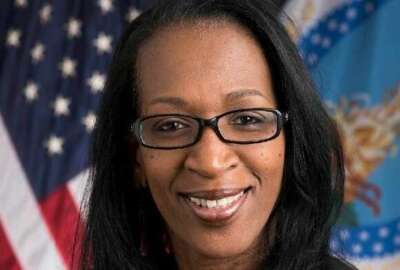

Throughout the pandemic, Congress has not missed the Congressional Record. Nor have Executive Branch agencies missed the Federal Register. All thanks to the...
Throughout the coronavirus’ stressors placed on lawmakers and their staff, Congress has still not missed the Congressional Record. Nor have Executive Branch agencies missed the Federal Register.
This is thanks to the Government Publishing Office, which is largely teleworking but still running its manufacturing operations. Director Hugh Halpern said their printing presses needed to keep producing the Federal Register, bills, hearings and reports for Congress.
“Now they are much smaller teams than what we normally use, but we’re still getting that work done,” Halpern said on Federal Monthly Insights ꟷ Business Continuity for Government Agencies. “And I also don’t want to leave out our good customer service folks who are working from home, too, supporting the federal agencies who are procuring printing and other items through the numerous contract printing firms we use all across the country.”
But while human capital and design team staff can continue their tasks, GPO’s passports office has not been able to work.
In addition, one of GPO’s contracted special police officers died as a result of COVID-19. Halpern said it was the first known employee case of the virus and that the agency has taken distancing measures and cleaned the entrance area where the guard was stationed.
“For those folks who do have to come into the plant, what we’ve done is we’ve split folks into two team,” he said on Federal Drive with Tom Temin. “And so we will work one week with one team and the next week with another team and that enables us to do two things: One is maintain some social distancing. And two, in the unfortunate circumstance that somebody does become infected, it doesn’t knock out the entire workforce.”
GPO is also reaping the benefits of investment in new digital inkjet presses. In the previous, offset printing environment, Halpern said it could take as many as 25 to 30 people to produce documents that now can be printed with as few as half a dozen.
At NASA, the majority of staff are working from home with only a small number of employees still reporting to the office. These team members working on spacecraft like the Perseverance rover, and other spaceflight missions, according to Chief Technologist Douglas Terrier. He said there is a lot of overlap between NASA science and technology.
“But generally, we can think of science as the concern of asking the big questions of how things work in the universe. And what’s out there and how we’re going to go investigate a planetary surface or investigating a situation on earth and its climate,” he said. “And the technology side of the house is really responsible for enabling the engineering solutions that allow us to answer those questions, developing the spacecraft, the sensors, the technologies that enable us to conduct those missions and answer those very hard questions.”
Terrier said his role as chief technologist is to help the leadership team pursue and develop advanced technologies across a broad range. NASA, he said, is eager to crowdsource across citizen scientists in academia, at other federal agencies and in private sector companies for solutions.
“So I really tried to be in contact with and in collaboration with scientists all around the world in all fields, to both keep up with technologies that we need inside NASA and fund and promote technologies and innovation within NASA, but also to keep touch with, collaborate with, and really foster technology and innovation outside NASA and the broader community as well,” Terrier said.
Copyright © 2025 Federal News Network. All rights reserved. This website is not intended for users located within the European Economic Area.
Amelia Brust is a digital editor at Federal News Network.
Follow @abrustWFED


